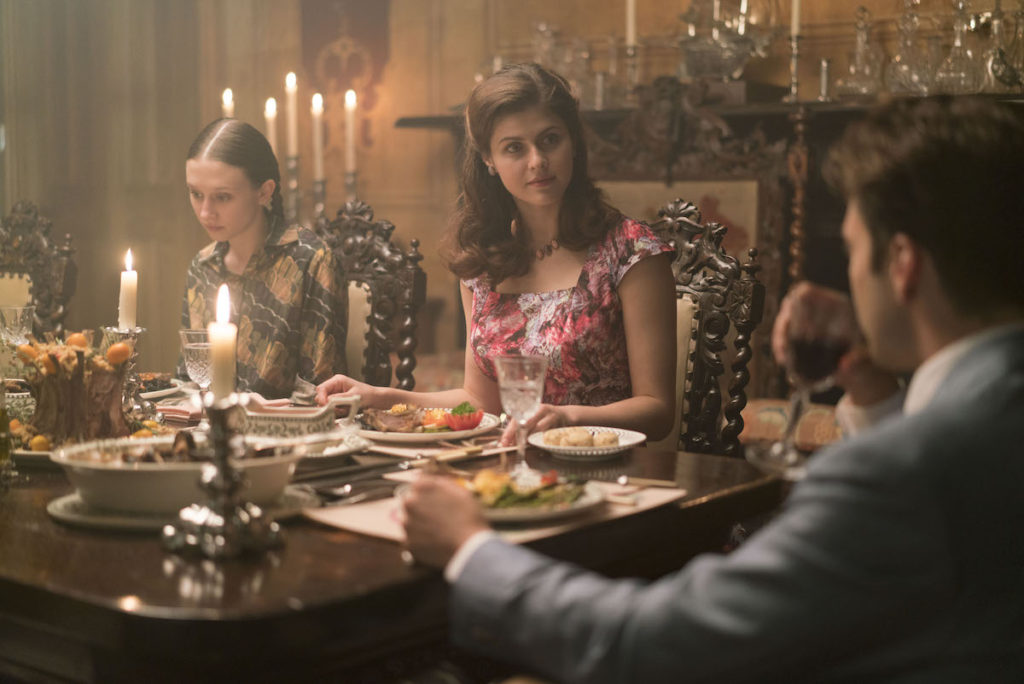We Have Always Lived in the Castle is widely regarded as Shirley Jackson’s masterpiece. Although she is probably best known for her work, The Haunting of Hill House which was adapted for a series on Netflix released last year. It is quite exciting to know that a new generation is rediscovering Jackson’s work. Jackson’s works tap into our greatest fears, one of those fears being trapped in a nightmarish environment and unable to escape due to a bigger anxiety of the outside world.
Indeed, in We Have Always Lived in the Castle, the character of Constance suffers from agoraphobia. This was a condition that Jackson herself suffered from. The idea that an anxiety disorder is so strong that physically keeps one confined and esstentially trapped in a situation that they know they should escape from, reflects on how powerless one can be especially those who have suffered such a traumatic event.
While this adaptation, does address Constance’s psychological and mental state, there’s a lack of exploration into this condition. Instead, the film whizzes along in order to get the plot points covered and the conclusion wrapped up. The film is aesthetically pleasing, carefully recreating the early 1960s setting of the novel, and as a result, the film manages to draw the viewer into this world.
However, the film seems a little too bright and vibrant when we consider the seriousness of the themes being discussed. The novel requests that the reader analyses the technique of the unreliable narrator who comes in the form of Merricat (played by Taissa Farmiga). However, in the film expects us to simply accept that what Merricat is narrating to us is the truth.
The film follows the 18-year-old Mary Katherine “Merricat” Blackwood who lives in isolation on the family estate with her older sister Constance (Alexandra Daddario) and their ailing uncle Julian (Crispin Glover). Constance has not left the house in the six years since she was tried and acquitted of the poisoning death of her parents. Every Tuesday, Merricat is sent into the nearby town to do the grocery shopping.
Before, she can leave she must carry out a number of rituals to cast a protection spell. The film implies that Merricat may possess magical abilities, but this is an area that is never fully explored which is slightly frustrating.
Then one Thursday, Constance sends Merricat on an errand to town. Merricat is deeply distressed that her pattern has been disturbed, and as a result, she doesn’t cast her protection spell nor does she check her safeguards in place. Upon her return to the house, she discovers all her wards have been unearthed. What is perhaps more distressing is the visit of their cousin Charles (Sebastian Stan), who seems set on wooing Constance in order to inherit their wealth. Suddenly, Merricat’s world of rituals and order is thrown in chaos as she starts to cash with Charles, leading to the absolute destruction of his dysfunctional little family unit.
The film looks beautiful, full of a rich depth of warmth and colour. The world of Blackwood house is attractive to look at. The film’s cinematography by Piers McGrail offers some impressive shots in deep focus, which help create a slightly unsettling, off-key atmosphere.
The performances are strong with Farmiga and Daddario capturing the very essence of their characters. Daddario’s Constance becomes more and more unhinged as the film progresses, and her performance wouldn’t look out of place from The Stepford Wives. Although we are told that Merricat is 18 years old, Farmiga plays her as this young woman trapped in a perment state of adolscence, doomed to be eternally young and mocked by her peers.
The two supporting male actors are also very good in their roles. Sebastian Stan oozes charm. Like Constance, we can’t help but be hypnotized by his handsomness and charisma. Crispin Glover’s portrayal of the manic uncle Julian who is losing his grasp on reality is also quite decent. Still, the performances seem to outshine the rest of the film which seems slightly jumbled and poorly paced.
The score by Andrew Hewitt helps set the mood, adding to this feeling of unease as the characters of Constance and Merricat descend in paranoia and extreme anxiety. However, the film feels a little too cautious and safe in places. Director Stacie Passon is mostly known for her TV work, and this film does come across at times like a made-for-TV (or a streaming platform) film in terms of its scale. Passon is most likely still find her footing as a director, but this adaptation shows that she is more than capable of tackling well-known novels.
Overall, there’s something about We Have Always Lived in the Castle that just feels a little mundane and monotonous. It is always a difficult task adapting any novel to the big screen, and perhaps the complexities of the unreliable narrator in the form of Merricat are just too hard to replicate in the form of a film. By all means, the film is not a bad one, it just lacks a certain something to make it a remarkable one.

